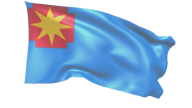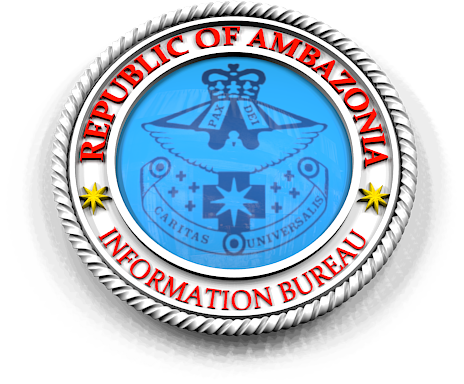Agriculture:
The territory of Ambazonia is blessed with fertile land along the coastal region which encouraged the Germans to open palm, tea, rubber, banana and black pepper plantations in the late 1800s. These plantations which were taken over by the British after the defeat of Germany in WWI and were renamed Commonwealth Development Corporation, and later Cameroon Development Corporation (CDC). After many past decades, the CDC remained the largest employer next only to the government of Cameroon, which has annexed Ambazonia and continue to despoil the natural resources of the territory. The CDC produces over 25,000 metric tons of natural rubber, 95,000 metric tons of palm fruits, and 40,000 metric tons of bananas annually. It has two large tea estates in Tole and Ndu, a coconut plantation in Mbonge and black pepper plantation in Bimbia.
In the domain of agro tourism, the diversity of agriculture is found through plantations and agro industrial units. The CDC is the largest agro industrial unit in Ambazonia with impressive Banana, Tea, and Palm Oil Plantations. You could visit the Tea plantation in Tole (Buea) and Ndu; Banana plantation in Tiko. There is also the PAMOL Oil Plantations in Ndian County. They are magnificent vast greeneries and exploitation of high revenue to the economy of the territory. Still in this domain, you will discover the beautiful Cocoa trees striking in their sizes, their cherries, their shapes and in their alignment. You could equally appreciate the diversity in Ambazonia agriculture in the North of the territory. It is a good opportunity finger plants giving Irish potatoes, beans, maize, cabbage, pepper, green pepper, tomatoes, cassava, okra, onion etc.
The palm fruit is used to produce oil used for cooking in most part of Africa. The oil can be used for soap and candle production. Kennel which is a by-product of palm oil can be crushed and oil pressed out of it, which can be used for the production of oil paint and candle and the by-product of the kennel can be used to produce bird feeds. While CDC operates an agro- industry, there are many sole proprietorship plantations for all the aforementioned products of CDC. Also, the great people of Mundani which comprises the villages of Bamumbu, Bangang, Banti, Bechati, Besali, Folepi and Egumboh have their economic life-stay wrapped in the numerous palm plantations that surrounds them.
Cocoa and coffee productions are at a large scale in Ambazonia. Before the unholy marriage with Cameroon, Ambazonia’s Marketing Board was in charge of the exportation and sale of cocoa and coffee produced in the territory. The marketing board was a success story for the farmers of Ambazonia, until Cameroon government liquidated it after annexation. Rice farming is carried out locally in the grassland region of Ambazonia, most specifically at Ndop
Sugar cane does great in Ambazonia, although it is not at industrial level. The fertile land of Ambazonia produces fruits such as papaya, oranges, grapes, guava, pineapples, water melon, etc. The Ndop plain forest is one of the most fertile areas in West Africa but it is underutilized.
Crude Oil:
Crude oil exploration and exploitation began in Ambazonia in 1964 in the off shore of the then Kumba division, after Nigeria discover fossil oil in the Niger Delta shelf. Since 1970, seventy five percent (75%) of Crude Oil produced in the triangle called Republic of Cameroon today, comes from an offshore area named Rio Del Ray Basin. 158000 barrels was the daily production of petroleum from the Rio Del Ray Basin from 1975 – 1980. It is about 70,000 barrels today. Meanwhile the French in late 1970 paid off an American oil exploring company which had discovered large crude wells in Tiko Sub-division, in pretext that the triangle called Cameroon was French. These wells are sealed and reserved for the French, although they are in the territory of Ambazonia. The Bakassi Peninsular which holds about a fifth of the total crude oil in Africa is part and parcel of Ambazonia along the boarders with Nigeria.
Coal/Gold:
A large deposit of coal has been discovered in Nkambe in the Grassland region of The Ambazonia. Gold was recently discovered in the Nkambe area as well.
Waterfall:
The Menchum fall is one of the biggest in Africa. It has the capacity of generating electricity that could supply most part of West and Central Africa if well developed.
The Yoke hydro power station which used to supply electricity to the territory of Ambazonia before it was trashed in early 70s by the government of Cameroon remains in corrugated sheets.
Forest:
Ambazonia is blessed with Tropical Rain Forest. Korup is more than sixty (60) million years old with its biological diversity and ecosystem still intact. It is the oldest remaining rainforest in Africa, with 1000 species, of which 60 are occurring nowhere else in the world. More than 90 medicinal plants have been discovered there, 36 of which are new to science, 400 tree species, 327 bird species, 174 species of reptiles and amphibians and140 species of fish. A vine found in Korup National Park known as Ancistrocladus or korupensis, has shown to be active against HIV. Researchers are doing findings all over the world with some positive signals surfacing. Oil palm is said to have originated from Korup as well as endemic co-evolved, an insect that pollinates oil palms. This insect was exported to Southeast Asia and it is making a big impact in the performance of their oil palms.
Timber:
The tropical rainforest engulf assorted species of timber, some which are over a thousand years old. European companies have been logging in this forest for decades without educating the local population on the harm of deforestation to their future environment.
Food Crops:
The territory of Ambazonia produces different food crops enough to feed her people and sell to other countries. These food crops includes but not limited to yams, cocoyams, plantains, beans, sugar canes, water melon, papaya, pineapples, corn, pea, and assorted vegetables. Twice a week, businessmen and women come from Gabon, the Central African Republic, Cameroon and Nigeria with Lorries to buy food crops at the little talked about international food market in Muea, Ambazonia. It should be noted that these food crops are produced by peasant farmers as of now.
Fishery:
Ambazonia has one of the richest fishing zones in West Africa. The coastal region of Ndian County is home to numerous species of fishes. For decades, this region has been supplying Nigeria with millions of tons of fish each year. The Bakassi Island is one of the richest fishing grounds in West and Central Africa. The fish is not yet industrialized.
Animal Husbandry:
Animal rearing has not been industrialized in Ambazonia but local people rear a lot of cattle to feed the territory and sell to other countries. Cows, pigs, goats, sheep, rabbits, horses, are some of the animals reared.
Transportation:
By 1953, the territory of Ambazonia had a Natural Deep Seaport in Victoria; a Wharf in Tiko; a Creekport in Mamfe; Airports in Tiko, Bali & Bessongabang which were all operational and the economy of the region was booming until the colonial government of Cameroon used her military force to shut them down.
With Contributions by Tata Andrew Edimo.


